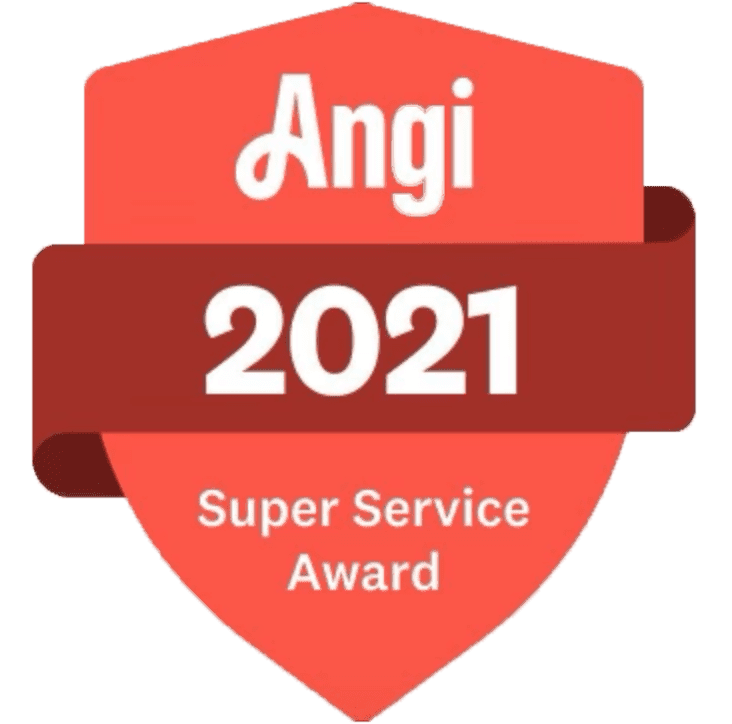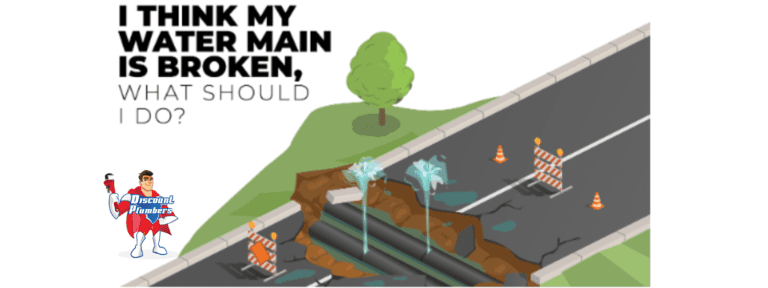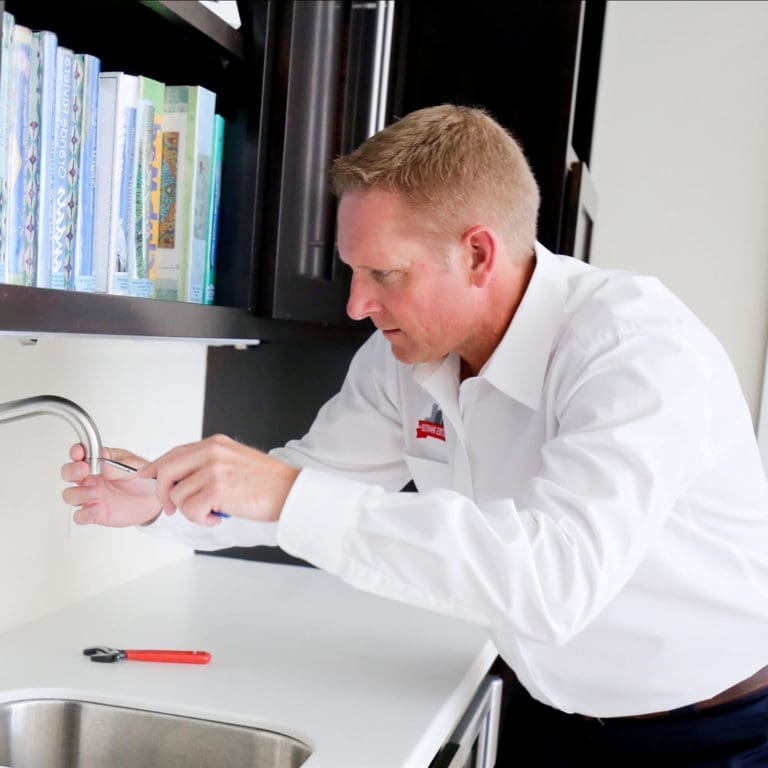Save Money On a Plumber With These Tips
Plumbing is an essential aspect of every home, often taken for granted until a problem arises. From ensuring clean water supply to proper wastewater disposal, a well-maintained plumbing system is crucial for a comfortable and functional living space. However, navigating the intricacies of plumbing can be daunting for many homeowners.
In this blog post, we will explore 15 fundamental things that every homeowner should know about plumbing. Whether you are a first-time homeowner or seeking to enhance your plumbing knowledge, this comprehensive guide will equip you with the necessary insights to tackle common plumbing issues, make informed decisions, and maintain the integrity of your home’s plumbing system.
So, let’s dive in and discover the key considerations that will help you become a savvy homeowner when it comes to plumbing!
1. Shut-off Valves
One of the most essential pieces of knowledge a homeowner needs is where their main water shut-off valve can be found. Knowing its location allows them to turn off their supply in case of plumbing repairs or emergency flooding or leakage in their home.
Your main shut off valve is typically situated where the incoming water pipe enters your home and is easily identifiable by its round metal shape with an attached handle that resembles a large wheel.
If you need help locating or using your main water shut-off valve or it appears damaged or leaking, seeking professional assistance would likely prove more useful in keeping your family safe while preventing costly damage to your home.
2. Water Pressure
Water pressure is of great significance to homeowners for several reasons. It helps make daily tasks and activities more efficient and prolongs the longevity of plumbing fixtures and appliances, but too much pressure may create additional challenges by placing unnecessary stress on pipes or damaging fixtures themselves.
An often-cited cause of high water pressure is an improper functioning pressure regulator (or pressure-reducing valve). This valve should keep water pressure within acceptable limits, so when its functionality lapses you’ll experience sudden and dramatic increases in water pressure throughout the home. If it has failed, this could explain a sudden and dramatic rise in pressure levels throughout.
As the first step of fixing this problem, make sure that the valve is fully open by turning the handle of the water meter. If this doesn’t resolve it, adjust the screw on your valve that controls water flow into your home – turning clockwise will tighten it and turning counter-clockwise will loosen it.
3. Water Heater Maintenance
Your water heater is one of the most essential appliances in your home, being used for many different tasks including showering, laundry and dishwashing. But like any appliance it requires periodic maintenance and inspection to remain operating optimally.
Water heaters can become quite stressed over time, especially as they age. Without regular inspection and servicing by a plumber, your water heater could become dangerous to operate – thus, it’s crucial that an annual plumber inspection be performed on it.
Your plumber will conduct an annual maintenance check of your water heater to assess its anode rod and drain valve. An anode rod attracts rust while protecting its inner lining from corrosion; they should typically be replaced every 3-5 years.
Pressure relief valves should also be checked, which are located atop of water heaters. They are designed to release any accumulated water or steam that builds up within the tank, thus preventing leakage into your home and potentially damaging it. To test them, place a bucket under the discharge pipe and lift up on its lever.
4. Frozen Pipes
As temperatures become colder, pipes in your home become vulnerable to freezing and bursting, one of the most frequent home disasters that homeowners must contend with and which can cost thousands in water and property damages.
Pipes that run against exterior walls or are located in unheated interior spaces such as basements, attics or garages are most at risk from freezing conditions, as these areas tend not to be heated by your home’s heating system and lack insulation protection.
Avoid this by installing pipe sleeves or increasing insulation levels in your home, as well as keeping your home warm – such as not dropping the temperature during cold stretches of weather and opening cabinet doors under sinks to allow warmer air circulation. Space heaters may also help thaw frozen pipes safely if used to evenly distribute heat in each room.
5. Septic Tank Maintenance
Septic tanks are underground containers designed to hold and treat wastewater waste until it separates into solids and liquids, with solids sinking to the bottom to form sludge while oil and grease rise to the top to form scum. When this process has completed, liquid wastewater exits via drain field or leach field.
When buying a country house, most people dream about the spaciousness and privacy it will bring. But many don’t take into account what their septic tank might bring when purchasing such an estate – when something goes wrong with this system it could lead to toxic wastewater contaminating both yard space and groundwater supplies – possibly leading to catastrophic consequences that include health concerns from toxic discharge into surrounding yards and groundwater supplies.
To keep your septic system in top condition, only flush toilet paper down the toilet. Avoid flushing disposable diapers, paint, chemicals, hygiene products and paper towels down the toilet; these materials can all cause blockages that stop it draining properly.
Furthermore, never plant or build anything near the septic tank such as gardens, pools, sheds or playgrounds as this could compact soil that damages pipes if compacted further by nearby planting and construction activities.
Lastly, it is a good practice to regularly inspect for signs of sewage such as heavy odors or water invasion by periodically walking around it while looking out for signs such as heavy odors in the yard and checking signs that signal possible leakage from its management – in any of its forms.
6. Drain Cleaning
Drain cleaning is often one of the least prioritized plumbing tasks, yet regular inspection and cleaning could save homeowners both money and hassle in the future. How often it must be performed will depend on its size and usage in a home’s pipes – with regular monthly inspection being sufficient in preventing expensive repairs later.
Dirty drains can be more than an inconvenience; they can also create unpleasant odors, health problems and structural damage in your home. Clogged drains may even lead to pipe leaks, water backups and sewer line breaks if left unattended.
Homeowners may be familiar with addressing minor clogs with store-bought drain cleaners, but when a drain becomes severely clogged it’s best to bring in professionals. Their more powerful tools will enable them to clear even stubborn clogs safely compared to liquid drain cleaners which contain toxic chemicals that could endanger both health and the environment.
7. Fixing Minor Leaks
As a homeowner, it’s essential that you understand even minor leaks can become major headaches. Don’t ignore dripping faucets or shower heads which leak, as this could result in expensive water damage repair bills.
Be wary of signs of leaks such as puddles of water, musty or mildew odors and changes to texture or color on walls or ceilings. If these signs occur, immediately shut off your main water source and contact a plumber immediately.
Leakage from pipes may seem minor at first, but over time the issue will only worsen, weakening walls and ruining floors in their path.
Early detection can save money and prevent water damage to your home in the future. Reading your meter and inspecting regularly are both key ways of reducing repair costs; use a stud finder before drilling into walls, floors or ceilings and use waterproof coating when painting or staining to protect supply and drainage lines from being cut by drill bits.
8. Regular Maintenance
Like with a car or any major appliance, homeowners must perform periodic home maintenance to ensure all systems are operating as designed and reduce costly repairs or replacements in the future.
Regular plumbing maintenance is of utmost importance for several reasons. First and foremost, it helps prevent major plumbing issues from occurring, saving you time, money, and inconvenience in the long run. By identifying and addressing minor problems early on, you can avoid costly repairs or replacements down the line.
Additionally, regular plumbing maintenance ensures the efficient functioning of your plumbing system. By keeping your pipes clean and free from blockages, you can maintain optimal water pressure and flow throughout your home or business. This not only improves the overall performance of your plumbing system but also enhances your daily activities such as showering, washing dishes, or doing laundry.
By investing in regular plumbing maintenance, you can enjoy peace of mind, save money in the long run, and maintain a comfortable and functional living or working space.
9. Learn to Fix Common Toilet Issues
Owning a home can be a huge responsibility, particularly when it comes to maintaining its regular repairs and maintenance needs. While certain problems might require professional plumbing assistance, others can be resolved using basic do-it-yourself (DIY) tools and knowledge.
Running toilets are both frustrating and wasteful of water; they also waste hundreds of gallons daily and increase your water bill. A simple leak in a toilet may only require tightening the bolts underneath its tank or floor or replacing the wax ring seal to repair.
Water pooling around the toilet base, an indicator of leaking valve or tank gasket. A DIY fix for this would be replacing both drain wax ring and tank gasket.
If your toilet makes an ominous whistling or vibrating sound, this could be due to mineral buildup in its flush valve. Fixing this requires no plumbing skills and should only take minutes; alternatively you could try using an auger or chemical drain cleaner to clear away blockages in order to free your drain of minerals.
10. Water Quality
Water quality refers to the suitability of water sources for specific uses based on physical, chemical and biological properties. It is an increasingly pressing global concern as its quality directly impacts human health and well-being, industrial processes and environmental protection efforts.
Clean drinking water is essential to good health for infants, children, the elderly and people with compromised immune systems. Poor water quality can lead to diseases such as cholera, dysentery, hepatitis A, typhoid and polio; caused by microorganisms, metals such as lead or disinfection byproducts in drinking water sources.
At home, homeowners can use numerous tools to assess water quality – from affordable digital instruments measuring pH, temperature and TDS/ORP levels to more expensive colorimeters that analyze which wavelengths of light the water absorbs. Furthermore, various organizations exist that monitor and uphold global standards regarding drinking water contaminants as well as government and regulatory bodies that enforce them.
11. Prevent Clogged Drains
Clogged drains are one of the most widespread plumbing issues, causing serious inconvenience and potentially leading to expensive repair or replacement costs. Luckily, there are simple things you can do to prevent them.
Add drain screens or strainers to all sink, tub and shower drains in your home to collect hair, food debris and other forms of debris, significantly decreasing clogs and costly plumbing repair bills. This is an affordable and simple solution.
Grease is another cause of clogged drains. Instead of pouring it down the drain, place a small container underneath your sink to collect used cooking oil and and dispose of it into a garbage can when full.
Regularly flush your drains with a mixture of baking soda and vinegar for the ultimate flush, creating a foaming action to dissolve organic waste and soap scum before they have time to clog your pipes.
Furthermore, regularly clean around your bathtubs and showers’ drain covers with wet paper towels to remove gunk build-up that accumulates around drain covers or stoppers – it could just take one quick wipe!
12. Water Conservation
Leaks can be costly both financially and environmentally. Luckily, there are various methods you can implement to enhance the plumbing in your home in order to reduce leaks.
Replace faucets and showerheads with low-flow models; install a water meter to track usage; keep an eye out for drips or signs of leaks such as water spots around appliances; monitor usage carefully to identify leaks quickly and make necessary adjustments; track consumption per area in your home to maximize savings.
Save water by taking shorter showers, turning off your washing machine or dishwasher when they’re full and being more mindful with what goes down the garbage disposal (no oils or grease!).
Also know where your main shut-off valve is so you can quickly turn it off if necessary and regularly testing each supply valve to make sure they operate smoothly without leakage or difficulty turning freely.
13. Avoid Chemical Drain Cleaners
Chemical drain cleaners represent a multibillion-dollar industry, yet are far from safe for home or the environment. Their toxic ingredients often cause severe skin and eye burns upon exposure and also emit dangerous fumes that harm lungs, throats and ears. Furthermore, chemical cleaners have the capacity to damage PVC pipes as well as corrosion metal ones if left unused in an overcrowded system.
Additionally, they often prove ineffective at clearing away clogs that are located far from the drain opening. Instead, their use simply dissolves material causing clogs without treating their cause – an improper slope in plumbing lines, blockages in main sewer drains or another issue which needs professional intervention may all play a part.
Instead of turning to chemical drain cleaners, why not try running a plumber’s snake through your drain instead? This long length of metal wire features both a handle and crank on one end, as well as an auger-looking head on the other – the handle allows you to push it into any drain until it encounters an obstruction.
14. Know and Own the Basic of Plumbing Tools
As more homeowners opt for DIY plumbing projects themselves, it is crucial that they have access to the necessary tools. A pipe cutter offers clean cuts through plastic, copper and thin wall iron pipes and is available from most hardware and home improvement stores; while a hacksaw typically leaves rough edges when used on larger pipes.
There are several common plumbing tools that are used by plumbers and DIY enthusiasts for various plumbing tasks. Here are some of the most commonly used plumbing tools:
Pipe Wrench: A pipe wrench is a heavy-duty wrench with adjustable jaws used for gripping and turning pipes, fittings, and other round objects.
Adjustable Wrench: An adjustable wrench, also known as a crescent wrench, is used for tightening or loosening nuts and bolts of different sizes. It has an adjustable jaw that can be customized to fit various fasteners.
Pliers: Pliers are versatile tools used for gripping, bending, and cutting various plumbing components. Tongue-and-groove pliers (also called channel-lock pliers) are especially useful for gripping pipes and fittings.
Pipe Cutter: A pipe cutter is a tool designed to cut through different types of pipes cleanly. There are various types of pipe cutters available, including wheel-type cutters, ratchet cutters, and tube cutters.
Hacksaw: A hacksaw is a fine-toothed saw used for cutting through metal pipes, bolts, and other plumbing materials.
Plunger: A plunger is a simple tool used for clearing clogs in toilets, sinks, and drains. It creates suction and pressure to dislodge blockages.
Plumbing Snake/Auger: A plumbing snake or auger is a flexible tool used to clear more stubborn clogs in drains and pipes. It is inserted into the pipe and rotated to break up or remove blockages.
Pipe Threader: A pipe threader is a tool used to create threaded ends on pipes for secure connections. It is commonly used for installing fittings and joining pipes.
Teflon Tape: Teflon tape, also known as plumber’s tape, is a thin, white tape used to seal threaded connections and prevent leaks. It is wrapped around the threaded ends of pipes and fittings.
Basin Wrench: A basin wrench is a specialized tool used to tighten or loosen nuts in hard-to-reach places, such as under sinks. It has a long handle with a pivoting jaw that can grip and turn nuts in tight spaces.
These are just a few examples of common plumbing tools. Depending on the specific plumbing task, additional tools such as pipe benders, soldering equipment, pressure gauges, and pipe reamers may also be required.
15. Hire a Professional for Complex Issues
No matter the complexity of the problem, hiring a professional plumber should always be your first choice to resolve issues quickly and professionally. These specialists have been trained to identify and repair all types of pipe related problems throughout your home including sewer line replacement if necessary, as well as advise you on maintaining regular preventative maintenance to help avoid future complications.
Before hiring a plumber, ensure to inquire about their years of experience to gain an idea of the quality of their work. Also inquire as to whether their pricing includes costs for new parts needed for completion of your task.
No matter the severity of a plumbing leak or drip, taking action immediately is key to maintaining safe and comfortable living environments. Waiting until an issue worsens can result in costly repairs and property damage.
By following these tips you can help avoid common plumbing problems while keeping your home plumbing functionally safe and comfortable.
Discount Plumbers To The Rescue!
Discount Plumbers offers top-notch services at competitive prices, making them a cost-effective option for those on a budget. Our team of skilled plumbers is dedicated to providing efficient and effective solutions, ensuring that your plumbing problems are resolved promptly and with minimal disruption to your daily routine.
If you have a plumbing issue that is to complex or is an emergency, don’t hesitate to contact us to schedule your appointment. Our licensed plumbers are highly skilled and knowledgeable. We provide ‘plumbers near me‘ services 24/7 with no extra fees or hidden charges. We’re located in Minneapolis, Minnesota but service 65 surrounding metro-areas. Free estimates too! Don’t delay….. call today.













